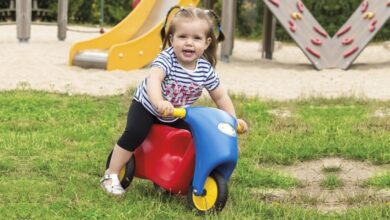Characteristics, classification and use of i-Size Chairs

The i-Size car seats were designed from the creation of the regulations of the same name, to offer a series of features that reinforce the safety of children when traveling by car. However, there is an older regulation, ECE R44/04, which was created in 1982 and is still in force together with the new one, although it is about to disappear. In this article we detail some of the most important aspects that you must take into account when purchasing a child car seat.
The i-Size and ECE R44/04 regulations are responsible for regulating the application of Child Restraint Systems (SRI) in car seats used in Spain and throughout Europe. However, there are great differences between these two regulations.
ECE R44/04
This standard is based on a classification system based on the child’s weight, so car seats are divided into four large groups; 0, 0+, 1, 2 and 3. Group 0 is suitable for children under 10 kg, 0+ can be used by children up to 13 kg, while group 1 is for children between 9 and 18 kg of weight. For their part, those corresponding to group 2 are for children weighing between 15 and 25 kg and those of group 3 work well for children weighing between 22 and 36 kg.
This standard guarantees compliance with certain safety measures, such as an analysis of the design of said chair, a front and rear crash test at 30 and 50 km/h, a seat belt and seat harness test, as well as a system test. seat harness closure, among others.
i-Size or ECE 129
With this new standard, CRSs will now be classified by the height of the child. Experts say this decision will result in fewer usage errors than the traditional standard weight grading.
In addition, for many parents the selection will be easier, because they will only need the size of their child, as well as the reference point for changing the seat, which will occur when the child’s head begins to touch the upper edge of the seat..

i-Size height classification
With this new standard, each manufacturer has the possibility of homologating their i-Size seats according to the height range, which leads to the creation of several classification groups, as happened with the ECE R44/04 standard.
The first of these groups is the i-Size 40 – 75 cm. In this case, these seats can be used from the birth of the baby until it measures 75 cm, which could happen when the child is approximately one year old. In addition, this type of seat is designed to be installed facing backwards and is compatible with the Isofix anchorage with a support leg.
The next group to appear is the i-Size from 40 to 105 cm. These seats are suitable from birth until the child reaches 105 cm or 18 kg, which should be approximately 4 years of age. Its installation must be in reverse, using the Isofix system with a support leg or with Top Tether to provide greater security.
The other group of car seats is the i-Size from 100 to 150 cm, which corresponds to children between 15 and 36 kg or between 4 and 12 years of age, which uses a non-integral retention device, so the child can be restrained with the seat belt. In addition, the use of a restraint system with a backrest is recommended with this chair.
How to identify an i-Size car seat?
The i-Size seats must have a badge that identifies them, where the manufacturer must indicate their most important characteristics, as well as the name of the homologation, which in this case will be i-Size, in addition, it must be in a visible place for so that the user can easily see the label.
Also, you must mention the appropriate height and weight of the child, the place where the homologation was carried out in letter and number. The letter should be E, which corresponds to Europe and the number identifies the country of origin. It also includes the homologation number and serial number of the chair.

i-Size car seats bet on the rearward facing position
Another of the innovations of the i-Size homologation is the importance of its use in the rear, which is found in the regulations implemented by the Road Safety Law and that traffic agents enforce. Likewise, the laws require that this be fulfilled at least up to 71 cm in height or 15 months of age.
Experts support the use of the i-Size seat in this position, as they consider it to be the safest way for children to travel. For this reason, the best car seat should have this system, in addition, it is recommended to use it in rear facing even after over 15 months of age.
i-Size seats greatly exceed front, rear and side impact tests, making them more reliable in protecting children. In addition, the mandatory use of the Isofix fixing system prevents installation errors, since it is simpler and incorporates a third anchor point at the base to offer greater stability.
Another point in its favor is that all vehicles that have been manufactured from 2013 onwards must be equipped with this fixing system, to facilitate its rear-facing installation. Likewise, the car must be identified with the homologation sign.
Cars that were manufactured before 2013 generally do not have seats for the size of i-Size seats, so it is necessary to check if the seat you want to purchase can be adapted to your car.
However, if you have a seat approved under the ECE R44 regulation, you can continue using it without problems until the General Directorate of Traffic indicates that it has been revoked. While this change in the laws occurs, you will be able to use the previous one without being fined for not having the i-Size.



